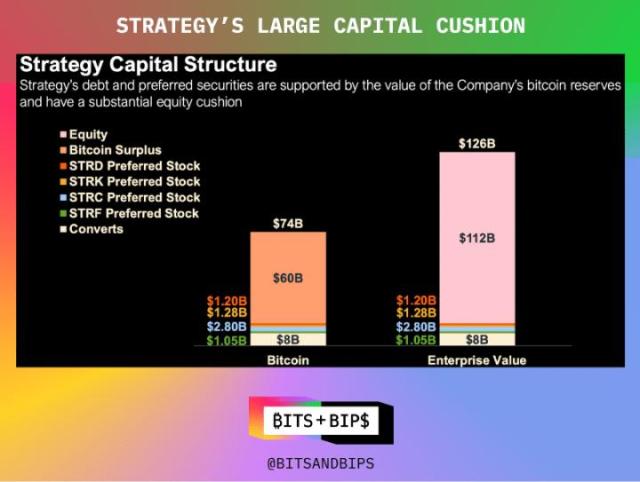I. Introduction
In 2025, global cryptocurrency regulation is reaching a historic inflection point. The once-gray area of crypto assets is now gradually being intervened and reshaped by the government's "visible hand". From a series of milestone crypto bills proposed and reviewed in the United States to the Stablecoin Regulation officially implemented in Hong Kong, major world economies are almost simultaneously transitioning from a blurry, wait-and-see, or even suppressive attitude to actively constructing a clear regulatory framework. This global policy shift marks the crypto industry's departure from its savage growth era and entry into a new phase premised on compliance and accelerating integration with traditional finance.
This article aims to comprehensively sort out and deeply analyze the major developments in global crypto policies since 2025, and forecast their profound impact on future market dynamics. We will first focus on the United States, dissecting its series of legislative, administrative, and regulatory measures; then expand our view globally to overview policy dynamics in key jurisdictions like the EU, Hong Kong, Singapore, and the UAE; subsequently analyze the market's price, institutional movements, and on-chain data to reveal the policy-market linkage; finally, we will distill the core trends of future global crypto policies, providing forward-looking references and insights for investors in this era of opportunities and challenges.
II. Crypto Policy and Market Linkage Effects
The crypto market in 2025 demonstrates a clear policy linkage effect, repeatedly playing out "buy the expectation, sell the fact" trends, with policy hands bringing regulation and guidance to the crypto industry while reshaping market operating logic.
1. Crypto Policies and Market Prices
At the beginning of 2025, Bitcoin continued its late-previous-year rally, briefly breaking its historical high and crossing the $100,000 mark in early January. This wave of growth largely reflected expectations of Trump's election and his promised "crypto-friendly" policies. However, market sentiment also experienced fluctuations: as specific policy details were delayed in mid-January, Bitcoin prices significantly corrected in February, dropping from the January high (around $105,000) to around $70,000, falling over 17% that month. These fluctuations reflect investors' sensitivity to policy fulfillment - expectations drive growth, while delays trigger corrections. In early March, when Trump hinted on social platforms about establishing a national strategic crypto reserve, the market was reignited: Bitcoin surged 20% after weekend news, with Altcoins like XRP soaring 25% in two days. However, the subsequent official executive order, which did not include direct government Bitcoin purchases, made the market feel "good news exhausted", causing Bitcoin to fall about 6% after a short-term high.
In July, as the U.S. "Crypto Week" approached and legislative benefits gradually materialized, the market experienced a squeeze-like upward movement. In mid-to-late July, Bitcoin broke through its previous high and continuously set new records, reaching a historical high of $120,000 on July 14th. During this phase, multiple positive factors converged: the House of Representatives' soon-to-be-passed series of bills (GENIUS, CLARITY, etc.) were seen as industry landscape milestones, triggering investors' proactive positioning; simultaneously, the U.S. SEC's attitude shift accelerated approvals of spot Bitcoin and Ethereum ETF products, causing sustained and strong capital inflows into Bitcoin spot ETFs, driving prices to consecutive new highs. Crypto-related stocks also rose, with U.S.-listed mining companies and crypto-holding firms' stocks strengthening. Digital asset investment funds recorded a net inflow of $3.7 billion in a single week, pushing industry-managed asset scale to a historical high of $211 billion. Bitcoin-related products alone attracted $2.7 billion, dominating absolutely, while Ethereum and others also received substantial incremental funds. It can be said that policy dividends directly drove funds to "rush in", boosting market's significant rise.
(Translation continues in the same manner for the rest of the text)- GENIUS Act: On July 18, Trump signed the GENIUS Act, marking the first comprehensive cryptocurrency legislation passed by the U.S. Congress, focusing on stablecoin regulation and prohibiting interest payments. The act stipulates that only federally insured financial institutions can issue payment stablecoins, with issuers required to maintain 1:1 legal currency or high-quality reserve asset backing, undergo monthly reserve disclosures, and regular audits. All stablecoin issuers must comply with the Bank Secrecy Act and implement anti-money laundering and counter-terrorism financing measures.
- CLARITY Act: Following this, the U.S. House of Representatives reviewed another significant bill, the CLARITY Act. The act aims to clarify the definition standards for digital assets as securities or commodities and delineate the regulatory division between SEC and CFTC. It proposes to grant CFTC broader regulatory authority over non-security crypto assets and create a transition path for tokens meeting decentralization and functional standards.
- Anti-CBDC Act: Proposed to prevent the issuance of a U.S. Central Bank Digital Currency (CBDC), this act has passed the House of Representatives and is awaiting presidential signature or Senate cooperation. The bill aims to safeguard financial privacy and limit federal reserve system intervention in digital currency.
- BITCOIN Act: Introduced by Senator Cynthia Lummis on March 11, 2025, the bill seeks to consolidate Bitcoin seized by the federal government into a "Strategic Bitcoin Reserve" and develop a purchase plan, proposing to acquire 1 million BTC over five years.
- DCCPA: Initiated by multiple senators, attempting to classify most crypto assets as "commodities" under CFTC regulation while enhancing consumer protection measures.
- FIT21 Act: Passed by the House in May 2024, awaiting Senate vote. The act aims to clarify CFTC and SEC regulatory responsibilities, define decentralized chain standards, and provide exemptions for small-scale issuance.
In summary, since 2025, the United States has intensively introduced measures at multiple levels of legislation, administration, and regulation, which the industry calls the "regulatory spring". Under the Trump administration, the United States is trying to position itself as the "global crypto capital", reversing its previous ambiguous and suppressive policies through stablecoin legislation, market structure clarity bills, and executive orders. These measures have had an immediate impact on the market: investor sentiment has significantly improved, and new funds are beginning to flow into the compliant U.S. market.
IV. Crypto Policy Developments in Other Countries Around the World
Apart from the United States, many countries and regions worldwide have been accelerating the improvement of their cryptocurrency regulatory frameworks in 2025, with a focus on stablecoins, anti-money laundering, and market standardization.







